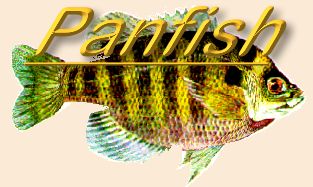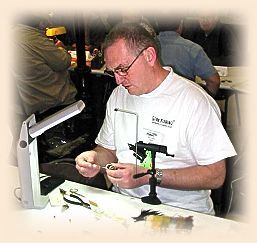|
The weather turned very mild in the
middle of February and the ice went off
the ponds. It did help that the wind was
blowing some and that makes the ice really
disappear. We had some cool nights that
caused a scum of ice to form over the ponds
but then the temperature would get high enough
to melt it off. I had fished from the shore a
couple of times, but had no luck.
Here in Iowa, March 5 and 6 were very
warm days with many high temperature
records set. That meant that the itch
to get out had to be scratched. I put
the rack back on the pickup and loaded
the canoe. I got everything loaded by
10:00 am and then some things that needed
to be done around the house and in the garden.
I headed off for a pond. I knew that it
would be dry enough to get in on the road.
I got everything into the canoe and launched
out into the pond. I had brought a
thermometer with me and checked the water
temperature. I did this at three different
depths. I was getting a reading of 41 degrees.
I knew the fish would be lethargic, but it
was a beautiful day and time to be out. I
decided to go with a couple of the flies
that I have foam on. I do this so the fly
will suspend more and I can move it very,
very slowly. I did this last fall in the
water just before it froze up and it worked
for me then.
I also had a new fly I decided to try. I
tied it on a size 8 hook. I used a white
marabou tail, a white chenille body, and a
wing with pearl Krystal flash and some white
luminescent yarn I have. I also had tied a strip of
foam onto the hook shank. I am playing with
the amount of foam to use to make these neutrally
buoyant at different depths.
I cast this fly out and let it drop for a while
and then very slowly retrieved it. I would move
it an inch or two and then let it set for at
least a minute. I also had a streamer nymph
tied with form that I had cast out, so I was
watching two rods at the same time. I was not
having any luck as I moved slowly around the pond.
I got to the east side of the pond where I know
there is a drop off about 8 feet out from the edge
that is fairly sharp and drops about four feet. I
thought there might be a fish or two swimming
along that break line. I cast both flies out and
let them sit and barely moved them. I had let the
white one sit and was just starting to move it
when I felt some weight on the line. I set the
hook and was into a nice crappie. What a way to
start the year! I cast it out again and went
through the same routine. I almost had it back
to the canoe when the line twitched. I was into
a nice bluegill.
I decided to stay at this spot and work it a
while longer to see what might happen. As the
streamer nymph was not producing anything, I
changed that over to another of the white fly.
I would cast it up near the shore, about
30 to 35 feet away and then slowly move the
fly. It would take a long time to get it back
to the canoe if no fish hit it. I had fish hit
the fly almost every time I cast it out and got
it back near the break line. Casting to the break
line did not work. The fly had to come from the
shallower water.
About every five minutes or so I would hook
a fish. Several of these I lost as they were
barely lip hooked, but it was still fun.
I did notice that the crappie were hitting
very lightly and there would be some
weight/resistence on the line. That was the
only way I knew they were on the line. The
bluegill would hit hard enough to make the
line twitch. That way I knew what was on
the line when they hit.
One other thing I need to explain is that
I hold a rod in each hand as I do this. I
am holding it at the top of the cork grip,
with the fly line between my thumb and
forefinger. This way I can move the line
with those two fingers. If I can feel the
resistance of a crappie I can set the hook
and put the other rod down. If the line
twitches, I can set the hook and
put the other rod down.
I do keep the rod tips pointed straight at
the line and very close to the water. This
is a little awkward to describe, but works
well for me. It is much easier than trying
to pick up the rod to set the hook.
I got home with 13 male gills and 10 female
crappie. I know this because I looked at the
stomach contents and the sex organs are right
there. I wanted to see what the fish might be
eating. I did not find very much of anything
that I could identify in their stomachs. In
fact there was not much in their stomachs.
I did share some the fillets with others folks
and we thought of all you that still have frozen
water. But those fillets sure were good eating.
Hope you can get out on the water. ~ Rick ziegeria@grm.net
|



